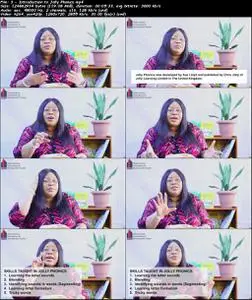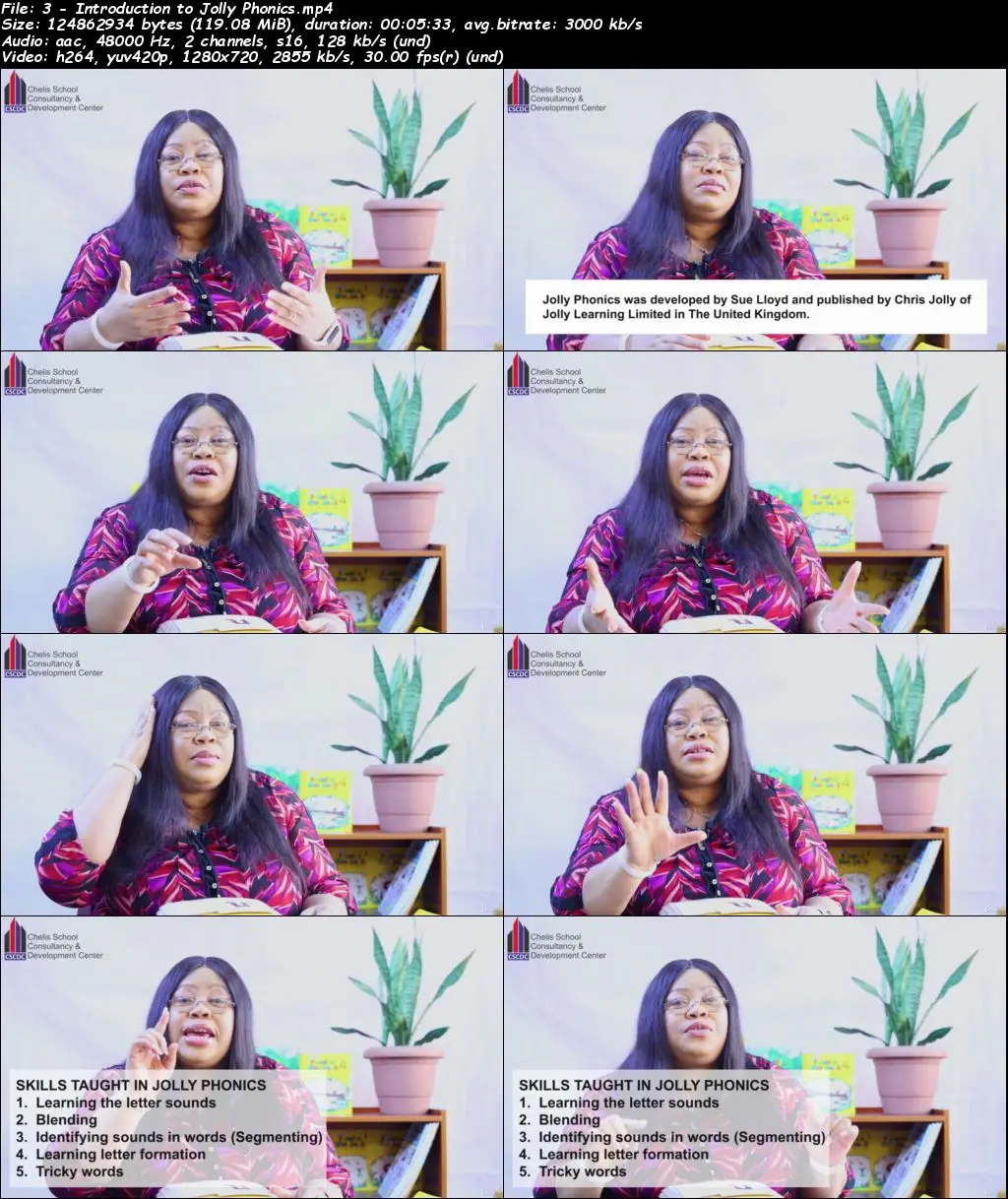Jolly Phonics Course -The Complete Course.
Video: .mp4 (1280x720, 30 fps(r)) | Audio: aac, 48000 Hz, 2ch | Size: 3.29 GB
Genre: eLearning Video | Duration: 17 lectures (2 hour, 48 mins) | Language: English
Video: .mp4 (1280x720, 30 fps(r)) | Audio: aac, 48000 Hz, 2ch | Size: 3.29 GB
Genre: eLearning Video | Duration: 17 lectures (2 hour, 48 mins) | Language: English
Child-centred and fun approach to teaching children how to read and write using the Synthetic Phonics.
What you'll learn
What's Phonics and Why Jolly Phonics?
The complete 42 letter sounds of the Jolly Phonics with their formations, actions, stories and how to teach them in an entertaining way.
The letter formation of all these 42 main sounds.
The course will help you to read and write in English, correctly, through blending the sounds to make words and distinguishing between the different sounds of
Techniques for the spelling of tricky words that are not phonetic.
Requirements
You need a computer
You must be willing to take actions on what you will learn
You do not need any prior knowledge about Jolly Phonics
Description
About this course
Jolly Phonics is a multisensory Synthetic Phonics programme that teaches early learners the skills they need to read and write fluently and quickly, in English language. It is child-centred, scientifically researched, fun and enjoyable by both teachers and children.
Description
It is undeniable that strong literacy skills are needed in all areas of life. This makes it crucial that all children should learn to read and write in their first few years at school. Literacy is a child’s key to a successful future; without the ability to read and write effectively, children often under-achieve in life.
Jolly Phonics is a Synthetic Phonics programme that teaches the English alphabetic code, which shows the relationship between the sounds that can be heard in words and the letter(s) that are used to represent those sounds.
When children read a word, they are decoding: They look at the letters, recognise the sounds each represents, and blend the sounds to hear the word.
When the children write a word, they are encoding: They listen for the sounds in the word and write the letters that represent those sounds.
The five basic skills for reading and writing taught in the Jolly Phonics are:
1. Learning the letter sounds
2. Learning letter formation
3. Blending
4. Identifying sounds in words
5. Spelling the tricky words
Learning the letter sounds
In Jolly Phonics the 42 main sounds of the English language are taught, not just the names of the letters of the alphabet. The sounds are in seven groups. Some sounds are written with two letters, such as ee and or. These are called digraphs. Both oo and th can make two different sounds, as in book and moon, that and three. To distinguish between these two sounds, the digraph is represented in two forms.
Story Telling and Actions
Each sound is taught with an action which helps children remember the letter(s) that represent that sound. As a child becomes more confident, the actions are no longer necessary.
Letter Sounds
At first, children learn each letter by its sound, not its name. For example, the letter ‘a’ is called a (as in ant) not ai (as in aim). Similarly, the letter ‘n’ is n (as in net), not en. This helps in blending the sounds to form words.
Letter Names
The names of each letter will be taught later when the children need to know the names of the letters for their literacy journey.
Order of the Letter Sounds
The letters are not introduced in alphabetical order. The first group (s, a, t, i, p, n) was chosen to be taught first because these sounds make more simple two, three and four-letter words than any other six letters in the English Language.
The letters ‘b’ and‘d’ are introduced in different groups to avoid confusion for the children.
Alternative Sounds
Sounds that have more than one way of being written are initially taught in one form only. For example, the sound ai (rain) is taught first, and then alternatives a-e (gate) and ay (day) follow later.
Learning letter formation
It is very important that a child holds his pencil in the correct way – the ‘tripod grip’.
The grip is the same for both left- and right-handed children. The pencil should be held in the ‘tripod’ grip between the thumb and first finger with the third finger serving as a bed to anchor the pencil. If a child’s hold starts incorrectly, it is very difficult to correct later on.
Blending
Blending is the process of saying the individual sounds in a word and then running them together to make the word. For example, sounding out d-o-g and making dog. It is a technique every child will need to learn, and it improves with practice.
Who this course is for:
This course is designed for teachers and all education professionals who teach literacy to children especially at the foundation stage.
The Jolly Phonics course is highly recommended for all teachers who teach other subjects in English Language who do not have a strong synthetic phonics background.
This course is very crucial for parents of young children who are learning how to read and write (literacy) at the foundation level and parents of older children.
The course is excellent for adults who are struggling with their literacy skills because of a lack of a solid literacy foundation that synthetic phonics provides.
This course is recommended for anyone who is learning the English Language.





